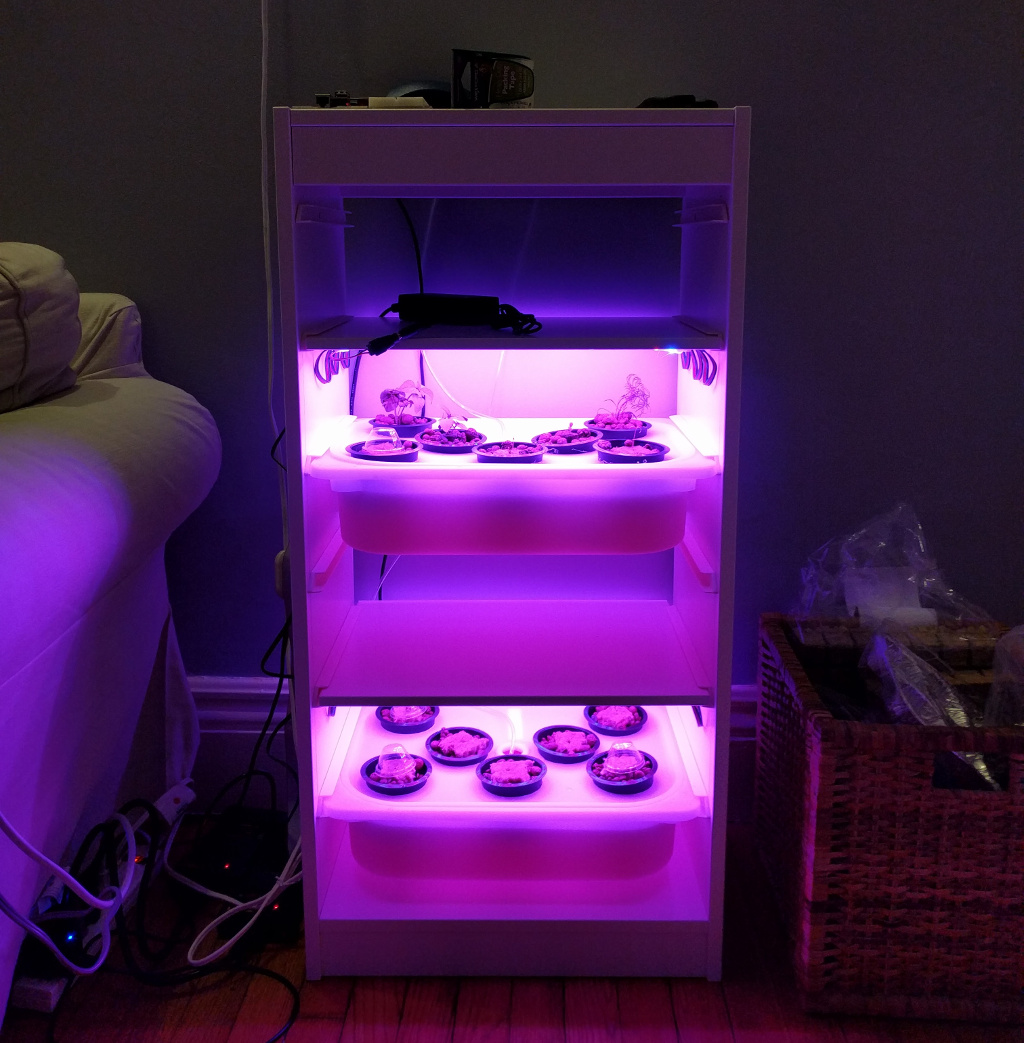HydroPi
Growing herbs sounds easy in principle: you buy a basil plant at the grocery store, place it in a sunny spot and water it regularly. In practice, I have never kept a living plant in the soil for longer than a month (excepting cacti, which make poor salad material). Sooner or later, as the plant grew, I always failed to strike the right balance between over- and under-watering the soil.
You can’t grow basil and other herbs without watering, but it turns out you can grow them without the soil. Ditch the dirt, suspend the root system in an oxidized nutrient solution, and you have a hydroponics system. If you toss in artificial lighting, the environment of the plant can be fully controlled, producing reliable yields even if you don’t know the first thing about gardening.
In early 2016, after experimenting with small out-of-the-box systems, my wife and I decided to build a custom hydroponics system.

The biggest obstacle was constructing a frame that would hold the plants, the nutrient solution, and the lights. Many DIY systems use PVC pipes for this (two examples), but cutting and assembling PVC seemed like a lot of hassle. Eventually, we decided to use an Ikea TROFAST cabinet to hold all components together. This was an excellent choice: the assembly was easy and the finished frame is very stable. As a bonus, both the plant drawers and the light fixtures can be pulled out, and their height can be adjusted.
Other than the TROFAST, our approach was traditional: LED strips for illumination and an aquarium pump for aeration. Since the lights should only be on for a certain number of hours per day, and the pump run briefly every hour, we use a Raspberry Pi to turn them on and off. The Pi also serves a minimal web application that allows “quiet mode” to be enabled for a given time. During “quiet mode”, the lights and pump will stay off.
If you are considering building your own hydroponics system, you can find our list of materials, assembly instructions, and software on GitHub.


